Circulating resources
Contents
- Ⅰ. Circular economy
- Ⅱ. Circular Design-Build advocated by Takenaka Corporation
- Ⅲ. [Make] Produce so as to not generate waste
-
Ⅳ. [Use] Continue to use buildings and their materials
- 1. Continuing to use building materials: Reusing old building materials
- 2. Continuing to use building materials: Recycling waste plastic
- 3. Continuing to use building materials: Horizontal recycling of building materials (glass)
- 4. Continuing to use buildings: BELCA Prizes
- 5. Continuing to use buildings: Utilizing historic buildings
- Ⅴ. [Connect] Circulating town resources
Ⅰ. Circular economy
Until now, economies have been based on a linear model (one-way) in which things are made, used, and ultimately disposed of. However, environmental efforts have become a social necessity, so we have been promoting 3R activities, which include reusing what was once considered waste as resources to create and use things. Unlike the linear economy, which is premised on the generation of waste, the future will require the practice of a circular economy with things being made using as few resources as possible from the beginning and designed to prevent waste even after their purpose has been completed. Takenaka Corporation is pursuing a new way of thinking about society and architecture based on the idea of a circular economy.

1. Our efforts to date
Our efforts to date
- ・Recycling rate of industrial waste generated from work sites (2022) 96.3%
- ・Electronic manifest usage rate (2022) 99.5%
- ・Number of awards received in the 3R Achievement Awards: Minister of Land, Infrastructure, Transport and Tourism (Construction) Award: 20 awards, 3R Promotion Council Chairman’s Award: 73 awards
In order to realize a circular economy, it is necessary to develop new technologies and transform the supply chain. Takenaka Corporation is promoting activities with the goal of reducing waste 50 percent by 2030 and 100 percent by 2050.
2. Topics: Participated in dialog on a circular economy

On October 11, 2023, our president, Masato Sasaki, participated in a roundtable dialog on the circular economy, which was held at the prime minister's office. The event was set up as an opportunity for experts working on resource circulation to exchange opinions, and President Sasaki spoke about “resource circulation in the construction sector.”
Ⅱ. Circular Design-Build advocated by Takenaka Corporation
We have put forth the concept of Circular Design-Build in order to realize a circular economy, and we will promote initiatives to reduce waste, such as reuse, recycle, and upcycle, with the keywords of “make,” “use,” and “connect” instead of the conventional scrap and build.

[Make] Produce so as to not generate waste
- ・Design and construction with dismantling, disassembly, and reuse in mind
- ・Selection of reusable and recyclable building materials
- ・Development of demolition processes and technologies that make the most of building materials
[Use] Continue to use buildings and their materials
- ・Creation of new value and utilization methods for existing buildings
- ・Development of long-life building materials
- ・Development of raw materials that can be reused, recycled, and upcycled
[Connect] Circulate resources from towns and lands and pass them on to the next generation
- ・Establishing building material circulation systems within the cities
-
・Developing commercial streams to accelerate the Forest Grand Cycle
Developing commercial streams for our lands and accelerating the Forest Grand Cycle
Ⅲ. [Make] Produce so as to not generate waste
1. Build without producing waste: 99 percent of construction materials are reused or recycled
The International Media Center*, a temporary building that will be demolished six months after construction, was designed and constructed in such a way that construction materials generated after the building's demolition can be thoroughly reused or recycled. As a result, 99 percent of the building materials were reused or recycled.

2. Build so as not to generate waste: Waste = 0 (zero emissions)
In order to reduce the amount of waste generated during the ZEB renovation work of our Higashi-Kanto Branch, we reviewed the areas scheduled for renovation to see if there were any parts that could be used without being demolished. This allowed us to reuse existing ducts, refrigerant piping, carpet tiles, external fins, and other parts. We also compiled a list of glass and other removed materials that would become waste, examined recycling, and recycled all of them. In addition, batteries from electric vehicles are being reused for the energy storage system in the ZEB conversion. In the end, we completely reduced CO2 emissions to zero with none during construction and none during operation.

3. Building so as to not generate waste: Changes in recycling rates
Our construction project offices are working with intermediate processing companies in various locations to perform detailed sorting of materials generated during construction in order to recycle as much as possible. As a result, even though a large amount of waste material is generated along with increases in construction, the recycling rate always remains at 90 percent or more.

Ⅳ. [Use] Continue to use buildings and their materials
1. Continuing to use building materials: Reusing old building materials
In culturally valuable buildings, such as historic ones, reusing existing tiles rather discarding them has great significance in preserving and passing on their historic design value. Rather than simply discarding tiles when rebuilding or renovating, we have developed a technology called MoltorⓇ that makes use the existing tiles to bring buildings back to life as attractive vintage buildings. By utilizing this technology, we are able to renew buildings without changing their ambience, which enables customers to use them as they wish for a long time.

2. Continuing to use building materials: Recycling waste plastic
In response to the global problem of waste plastics, the Act on Promotion of Plastic Resource Recycling was enacted in 2022. At Takenaka, we are investigating and getting to know the composition and processing situation for waste plastics discharged from our work sites, and we are examining separation methods for recycling.

3. Continuing to use building materials: Horizontal recycling of building materials (glass)
Buildings are made up of many materials, and we are endeavoring to recycle as many of these as possible. Toward this end, we are working together with glass manufacturers to experiment on producing new glass from that removed at demolition sites.

4. Continuing to use buildings: BELCA Prizes
The BELCA Prizes, which are presented by the Building & Equipment Long Life Cycle Association (BELCA), are a system for recognizing contributions to extending the service life of existing buildings that have been well maintained and preserved over a long period of time or have had outstanding renovations. There are two categories: Long Life and Best Renovation, and the selection for the prizes is carried out at actual places by the BELCA Prizes Selection Committee, which is comprised of academic experts and members who are well versed in this type of business. Since the first prizes in 1991, the quality of the buildings we have been involved with, and the maintenance and management done together with customers have been highly rated. We have received the highest assessment results among general contractors, both in terms of the total number of prizes received and the total number of design-build prizes received.

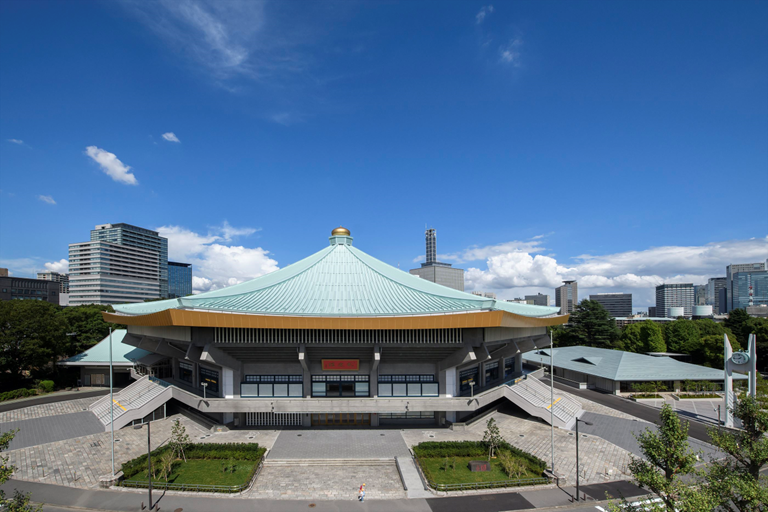
Renovation design: Mamoru Yamada Architects, general equipment consultant
Renovation construction: Takenaka Corporation and others
The value of the building was enhanced through renovations that improved safety, comfort, barrier-free accessibility, and energy efficiency while preserving the original design.
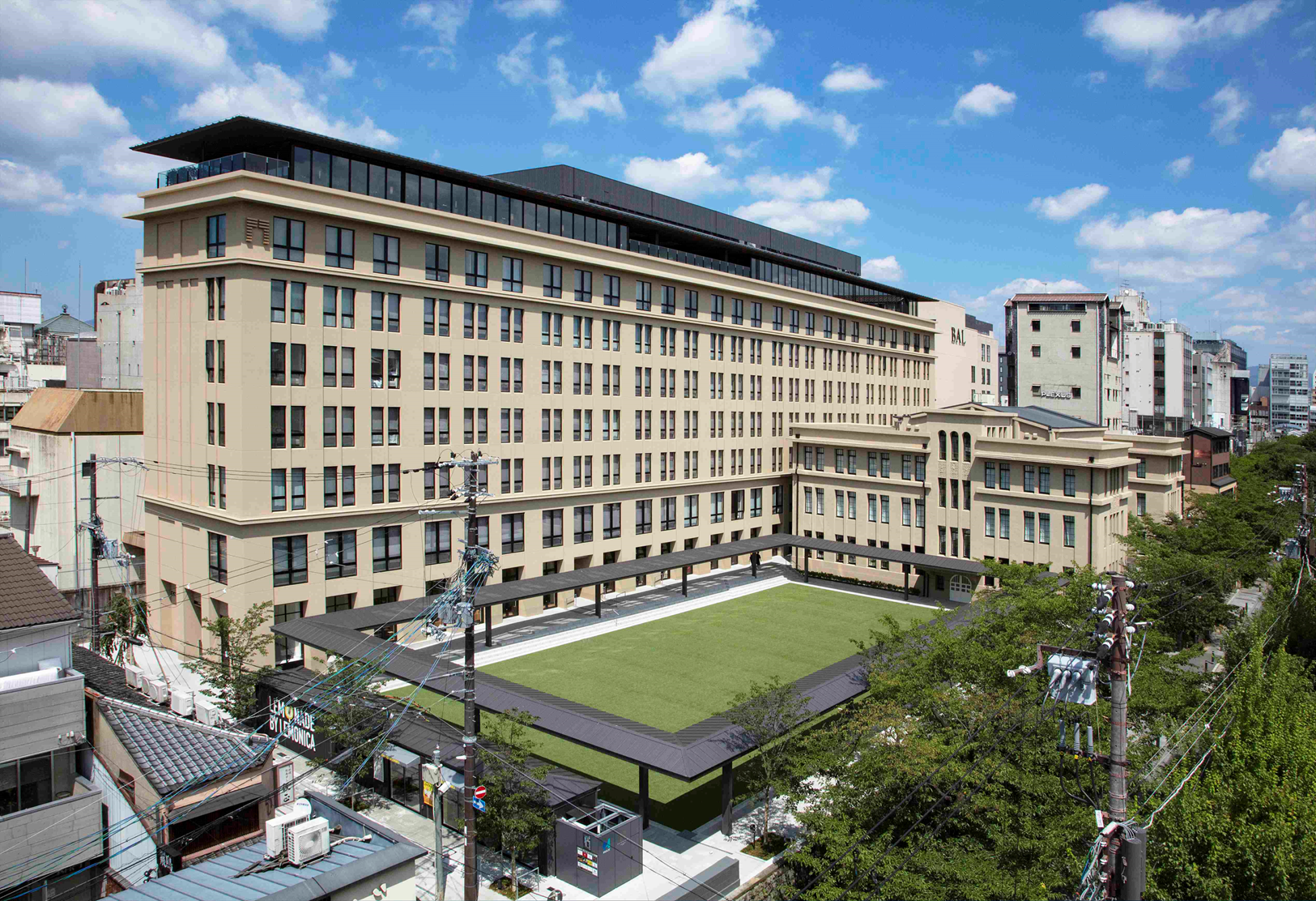
Renovation design: Takenaka Corporation
Renovation construction: Takenaka Corporation JV
Consisting of a hotel, hall, commercial facilities, library, and community hall, this is a multiuse facility, which was renovated from an elementary school. The conversion made good use of the unique features of the school building while improving comfort and safety.
5. Continuing to use buildings: Utilizing historic buildings
In addition to our traditional business model of design-build, Takenaka is also promoting the utilization of historically valuable buildings as businesses in themselves. These projects take shape through our understanding the context of towns in each area locality, urban and rural.
Former Yamaguchi Mankichi Residence (kudan house)

This is a preservation and utilization project whereby a Spanish-style mansion built in 1927 was master leased and converted into a membership-based business innovation center while making the most of the charm of the existing architecture. In 2018, it became a national Registered Tangible Cultural Property.
Hori Building (goodoffice Shinbashi)
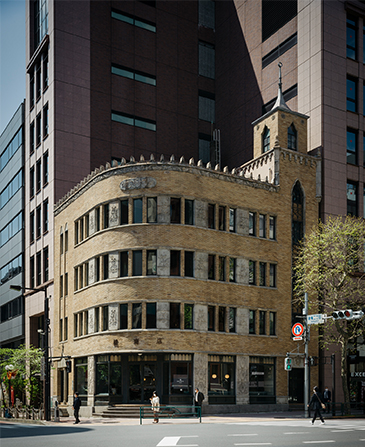
We master leased this Registered Tangible Cultural Property, which was built in 1932, and converted it into shared offices by performing seismic reinforcement and other improvements while also preserving the existing ornamentation. This is a case study in revitalization that makes the best use of a building's appeal through enterprise, design, and technology.
BYAKU Narai
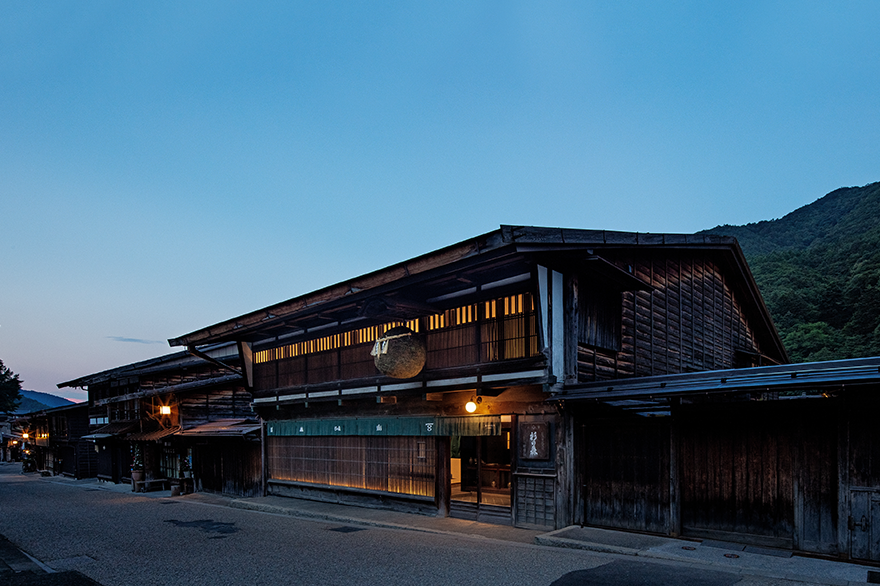
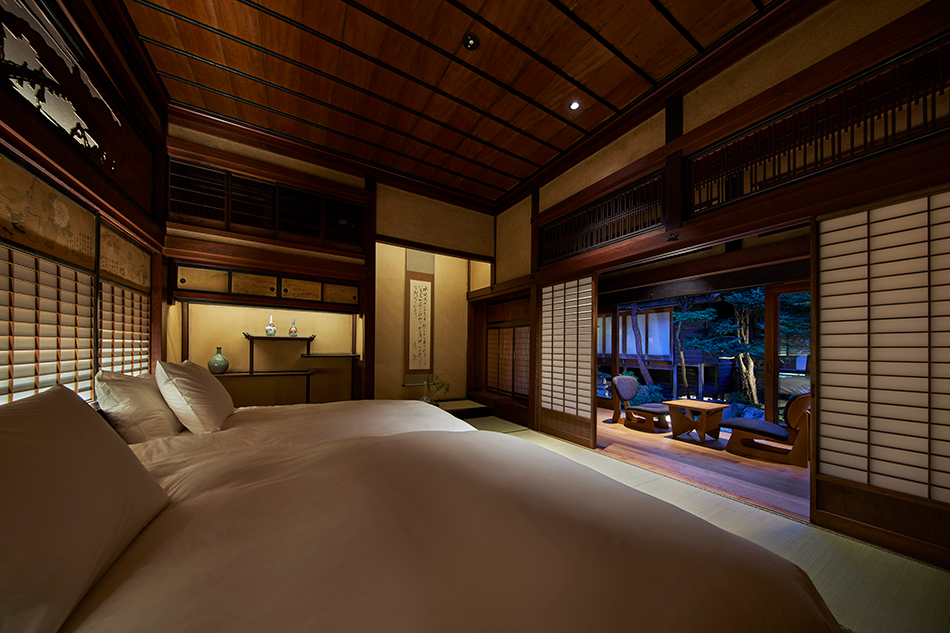
A 200-year-old former sake brewery in Narai-juku, Shiojiri City, has been renovated into a small complex that includes an inn, restaurant, hot spring facility, gallery to promote local culture, and a sake brewery. Using locally produced wood and a variety of crafts, such as lacquer, which have been passed down in the area, and under regulations for preserving the external appearance and structure, we improved earthquake resistance, the thermal environment, disaster prevention, and sound insulation functions. In 2020, we entered into a partnership agreement with Shiojiri City with the aim of contributing to the creation of a sustainable society and resolution of local issues.
Ⅴ. [Connect] Circulating town resources
1. Circulating town resources: Forest Grand Cycle
Under our Forest Grand Cycle concept, Takenaka has been developing and applying technology for mid- to high-rise wooden structures. This initiative is not only aimed at increasing the number of wooden buildings in urban areas, but also at resolving problems for maintenance and management of local mountain forests, which have become a social issue, by creating a new economic cycle between these forests and cities through the utilization wood. In 2022, we concluded an Agreement on Promoting the Use of Wood in Buildings with the Ministry of Agriculture Forestry and Fisheries, and we have since been accelerating the use of domestic timber in mid- to high-rise wooden buildings.
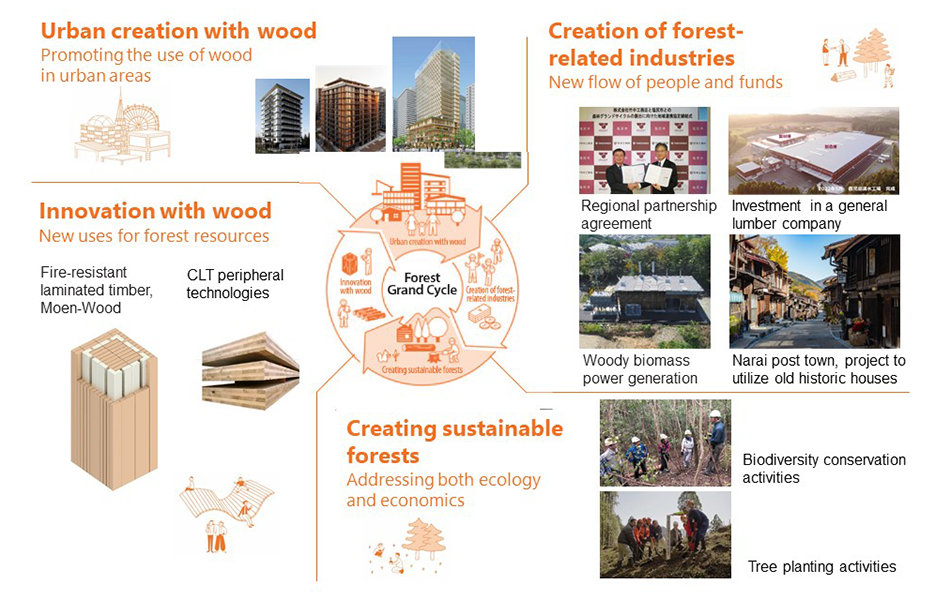
2. Circulating town resources: Metafarm
We are developing technology to convert residual food, large amounts of which are often discarded by food factories and restaurants, into energy through methane fermentation. By decomposing food waste inside buildings, without any need to transport it away, and generating methane gas, we are achieving a circular economy where energy is produced and consumed locally.

